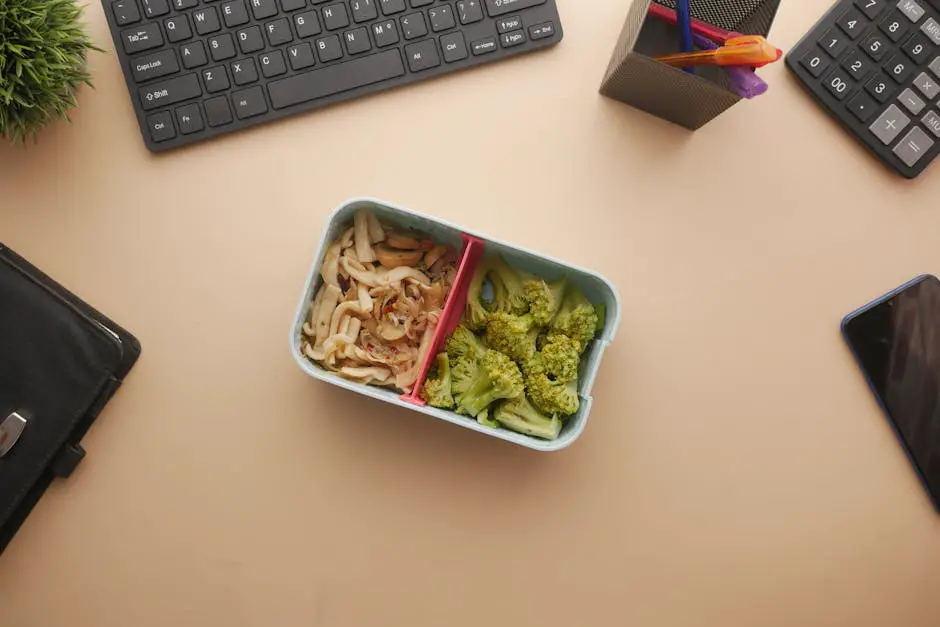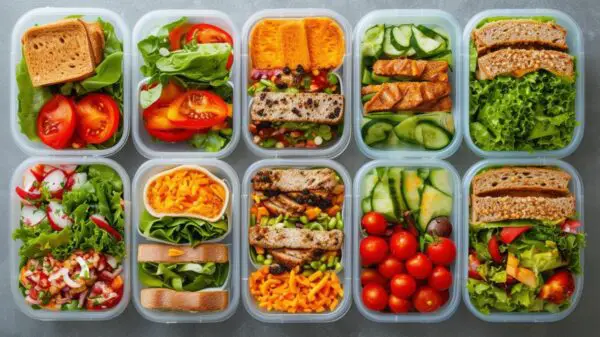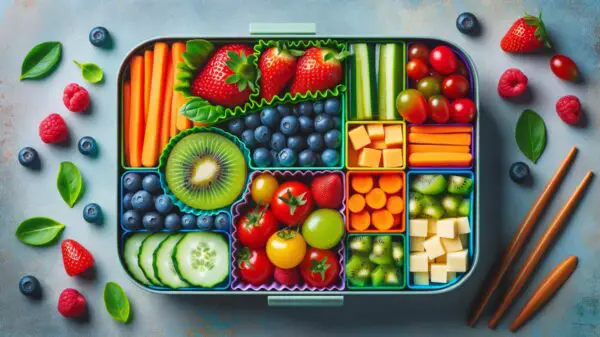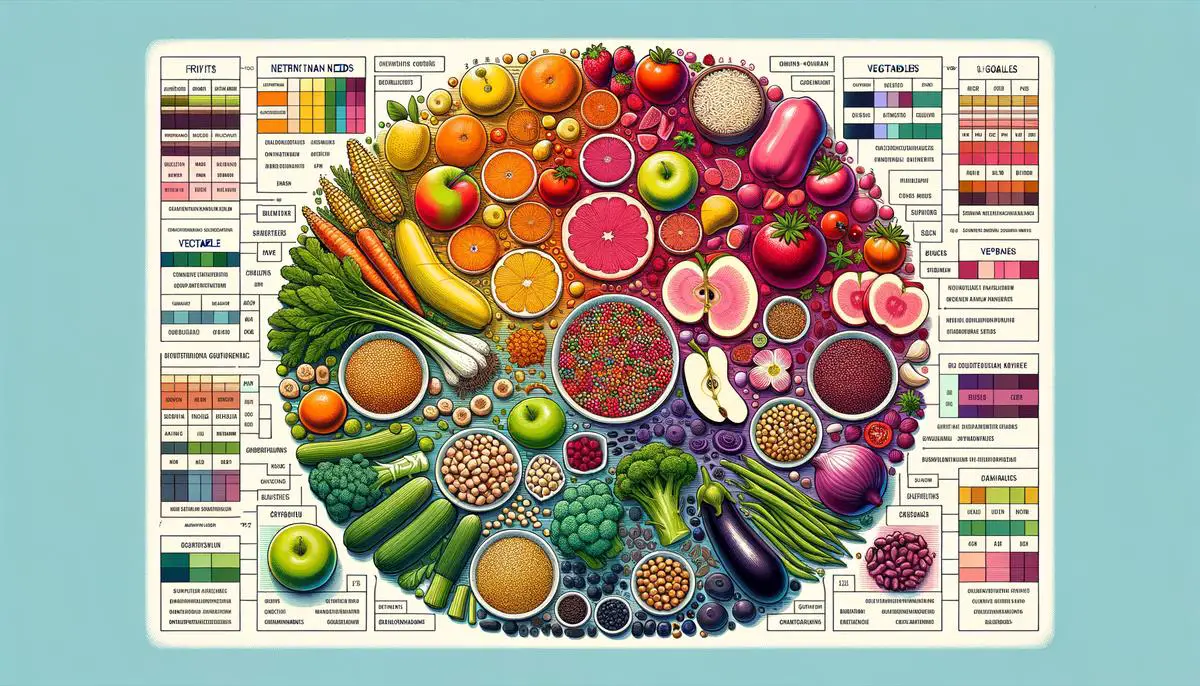Making a vegetarian lunch that checks all the nutritional boxes while still being delicious might seem hard at first glance. Yet, with the right approach and understanding of ingredients, it becomes an achievable goal. This guide aims to show how balancing taste and nutrition can transform the simple act of preparing lunch into an enriching experience that nourishes both the body and the senses.
Understanding Nutritional Needs
Creating a Nutritionally Complete Vegetarian Lunch: A Guide
Crafting a vegetarian lunch that’s not only satisfying but also nutritionally complete, may sound like a culinary enigma. Yet, it’s simpler than one might think. The trick lies in understanding which vegetarian foods to pick to form a symphony of essential nutrients. Let’s dive into how you can achieve this without enrolling in a crash course on nutrition.
1. Begin with Protein:
Often hailed as the building block of muscles, protein is crucial. Gone are the days when meat was the sole provider. Luckily, the vegetarian world brims with protein-rich champions such as lentils, chickpeas, quinoa, and tofu. Consider a lentil salad or a hearty chickpea soup as your starting point.
2. Carbohydrates Are Your Friends:
Carbs often get a bad rap, but they’re the primary energy source for your body and brain. Opt for whole grains like brown rice, whole wheat pasta, or quinoa. They’re not just carriers for sauces; they’re fiber-rich and keep you feeling full longer.
3. Fat Doesn’t Mean Fattening:
Healthy fats are crucial for absorbing vitamins and keeping your cells happy. Avocado, nuts, and seeds, besides being versatile in dishes, bring in those beneficial omega-3 fatty acids. Avocado slices on a sandwich or a sprinkle of sunflower seeds in a salad add both crunch and nutrition.
4. Vibrant Vegetables:
This is where your plate gets colorful. Vegetables are packed with vitamins, minerals, and fiber. Aim for variety and color – dark leafy greens, bright bell peppers, and everything in between. Roast them, steam them, or enjoy them raw. The more colors, the broader the range of nutrients.
5. Don’t Forget Dairy (or Its Alternatives):
For those not vegan, dairy can be a good source of calcium and vitamin D. Yet, if dairy’s not on your menu, fear not. Fortified plant milks and yogurts are excellent alternatives. A dollop of Greek yogurt or a glass of almond milk can be the perfect finish.
6. Fruit for the Sweet:
Fruits are nature’s dessert. Rich in fiber, vitamins, and hydration, they’re the perfect end to a meal or a snack in between. Berries, apples, oranges – they’re all good. They bring sweetness, without the empty calories of processed sugars.
7. Hydration is Key:
Finally, don’t underestimate the power of staying hydrated. Water, herbal teas, or infused waters are the best picks to complement your lunch. They assist in digestion and keep your metabolism ticking.
Combining these elements isn’t just about ticking nutritional boxes. It’s about creating a meal that’s a delight to the senses. A quinoa bowl topped with an array of roasted vegetables, sprinkled with seeds, and accompanied by a side of mixed berries provides a palette of flavors, textures, and colors. It’s not just lunch; it’s an experience.
Remember, balance is the cornerstone of nutrition. Mixing and matching different food groups ensures a broad spectrum of nutrients, making every vegetarian lunch a pathway to sustaining your energy and health.

Creative Recipe Development
Creating an exciting vegetarian lunch kids love goes beyond just balancing nutrition— it’s about sparking joy and curiosity with every bite. Here’s the secret sauce to elevating those vegetarian lunches from mundane to marvelous.
1. Embrace Cultural Cuisines
Dive into the treasure trove of global vegetarian dishes. From Mexican quesadillas stuffed with black beans and cheese to Japanese sushi rolls filled with avocado and cucumber, exploring international flavors can turn lunchtime into a culinary adventure. Not only does this introduce children to different cultures, but it also expands their palate in delightful ways.
2. Interactive Meals
Kids love to play with their food. Capitalize on this by constructing meals they can assemble themselves. Think of DIY tacos with a variety of fillings or personal pizza bases they can top with their favorite veggies. This hands-on approach encourages creativity and makes them more invested in eating what they’ve created.
3. Theme Days
Everyone enjoys a bit of anticipation. Establishing theme days like “Meatless Monday” or “Fun Friday” featuring imaginative vegetarian dishes can spark excitement. A “Rainbow Lunch” with fruits and vegetables spanning every color of the rainbow not only looks vibrant but ensures a variety of nutrients.
4. Novelty Shapes and Forms
A cookie cutter can transform a regular sandwich into a work of art. Something as simple as cutting vegetables and fruits into fun shapes or arranging them into a happy face on the plate can make a world of difference. It’s the visual appeal that captures attention first.
5. Savory Swaps for Sweet Cravings
Kids naturally gravitate towards sweetness. Instead of reaching for sugar-laden snacks, opt for natural sweetness with a twist. Sweet potato fries, roasted carrots drizzled with a bit of maple syrup, or bell peppers filled with savory cheese prove that vegetables can satisfy those sweet tooth moments.
6. Dip It, Spread It, Love It
Never underestimate the power of a good dip. Hummus, guacamole, or a simple yogurt dip can make raw vegetables exciting. Offering a variety of dips can also encourage experimentation with flavors and textures, making snack time a fun discovery zone.
7. Sneaky Chef Tactics
For the veggie skeptics, incorporating vegetables into familiar dishes can be an effective strategy. Blending spinach into a smoothie, incorporating zucchini into muffins, or using cauliflower as a pizza crust base ensures they’re getting the goodness without the battle.
8. Education Meets Enjoyment
Finally, involve kids in the meal planning and preparation process. Teaching them about the benefits of what they’re eating, letting them pick out vegetables at the market, or having them wash and prep the produce, gives them a sense of ownership. Making it educational adds value to the meal, turning it into a learning experience that they look forward to.
By weaving in creativity, play, and discovery into the lunchbox, you transform vegetarian meals from simple nourishment into exciting adventures. It’s about nurturing a lifelong appreciation for wholesome, vegetable-forward cuisine that tantalizes the taste buds and fuels the imagination.

Meal Prep and Packaging
Streamlining the School Lunch Preparation Process
Streamlining school lunch preparation can turn a daunting task into a smooth operation. By being methodical and efficient, you save time while ensuring meals are nutritious, enjoyable, and varied. The key? Smart planning, batch cooking, and a little creativity.
1. Weekly Meal Planning
First, start with a weekly meal plan. This step is crucial. Sit down once a week—Sunday works well—and outline what lunches will look like for the coming week. Incorporating the principles from earlier discussions on balanced meals, plan around the proteins, carbs, and veggies you’ll use. This way, you avoid last-minute decisions and grocery runs.
2. Shopping Lists
From your weekly plan, create a detailed shopping list. Organize it by grocery store sections (produce, dairy, grains, etc.) to save time while shopping. Sticking to a list also helps prevent impulse buys that might not fit into your healthy lunch criteria.
3. Batch Cooking and Prep
Invest time in batch cooking. Cook grains like quinoa or lentils in large quantities since they store well and can be a base for multiple lunches. Roast a variety of vegetables at the beginning of the week. They can easily be tossed into salads, wraps, or served as sides. Hard boil eggs for an easy protein addition. This method saves considerable time during busy mornings.
4. Efficient Packing
Have a set of reusable containers in various sizes for packing lunches. Assign containers for salads, sandwiches, fruits, and snacks. This not only helps with portion control but also ensures a variety of foods are included. Plus, environmentally friendly.
5. Making Lunches Night Before
Where possible, pack lunches the night before. Mornings are often hectic, and having lunches ready to go can be a game-changer. This also gives you the opportunity to involve your children in the process, teaching them about healthy eating and responsibility.
6. Smart Snacking
For snacks, think beyond the bag of chips. Use Sunday prep time to portion out healthy snack options like carrot sticks, cucumber slices, or pieces of fruit. Small containers of hummus or yogurt can also be prepped in advance for easy grab-and-go options.
7. Fun and Variety
Keep lunches exciting by introducing themed days or using cookie cutters for interesting sandwich shapes. A little creativity can make the same ingredients feel new and fun again.
8. Leftovers Are Your Friend
Don’t underestimate the power of leftovers. Many dinners can easily be transformed into the next day’s school lunch, saving time and reducing food waste. Think pasta salads, cold pizza slices, or transforming last night’s grilled chicken into a tasty wrap.
9. Hydration
Don’t forget about hydration. Water bottles with markings can encourage kids to drink more throughout the day. If plain water doesn’t cut it, adding a slice of lemon or cucumber can make it more appealing.
10. The Periodic Review
Finally, regularly review and adjust your process. What works one month might need tweaking the next as seasons change or as kids grow and their tastes evolve. Keeping communication open about what they enjoyed or didn’t can help refine your approach.
Streamlining school lunch preparation doesn’t have to be a chore. With a little foresight and some strategic planning, you can ensure your children enjoy delicious, nutritious meals every day of the school week. Remember, the goal is not only to feed them well today but to instill healthy eating habits that last a lifetime.

This guide serves not just as a recipe for creating nutritious and enjoyable lunches, but as a stepping stone towards embracing a healthier, more conscious way of eating. With every meal prepared, there’s an opportunity to explore, learn, and appreciate the rich tapestry of vegetarian cuisine. As we arm ourselves with the knowledge and skills to make these meals a part of our daily routine, we’re not just feeding ourselves; we’re nurturing a healthier future for our families and ourselves.




























